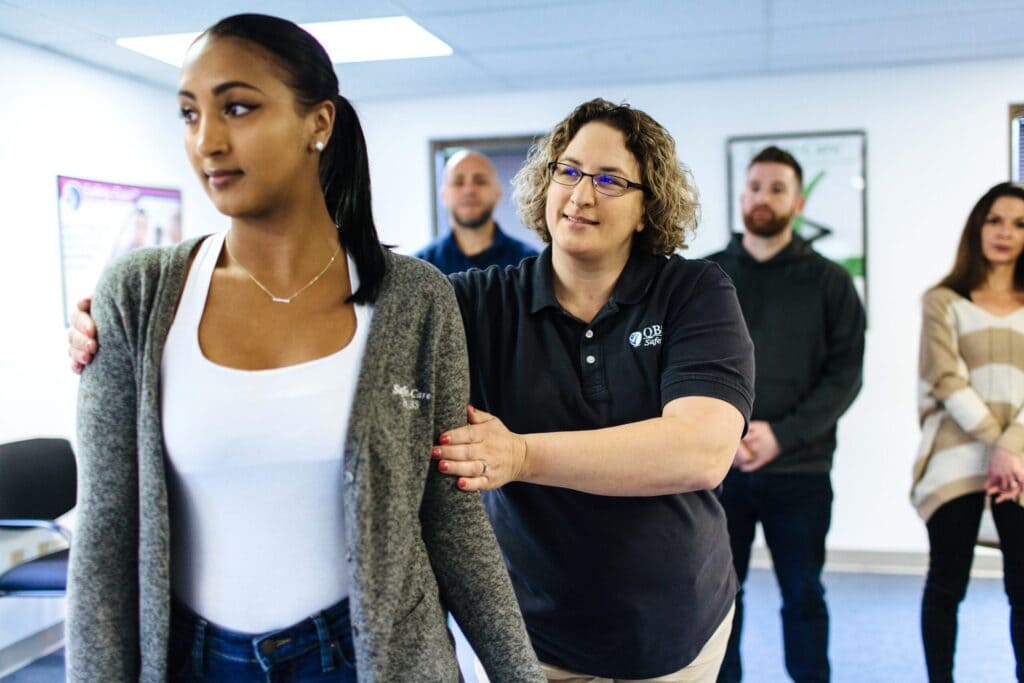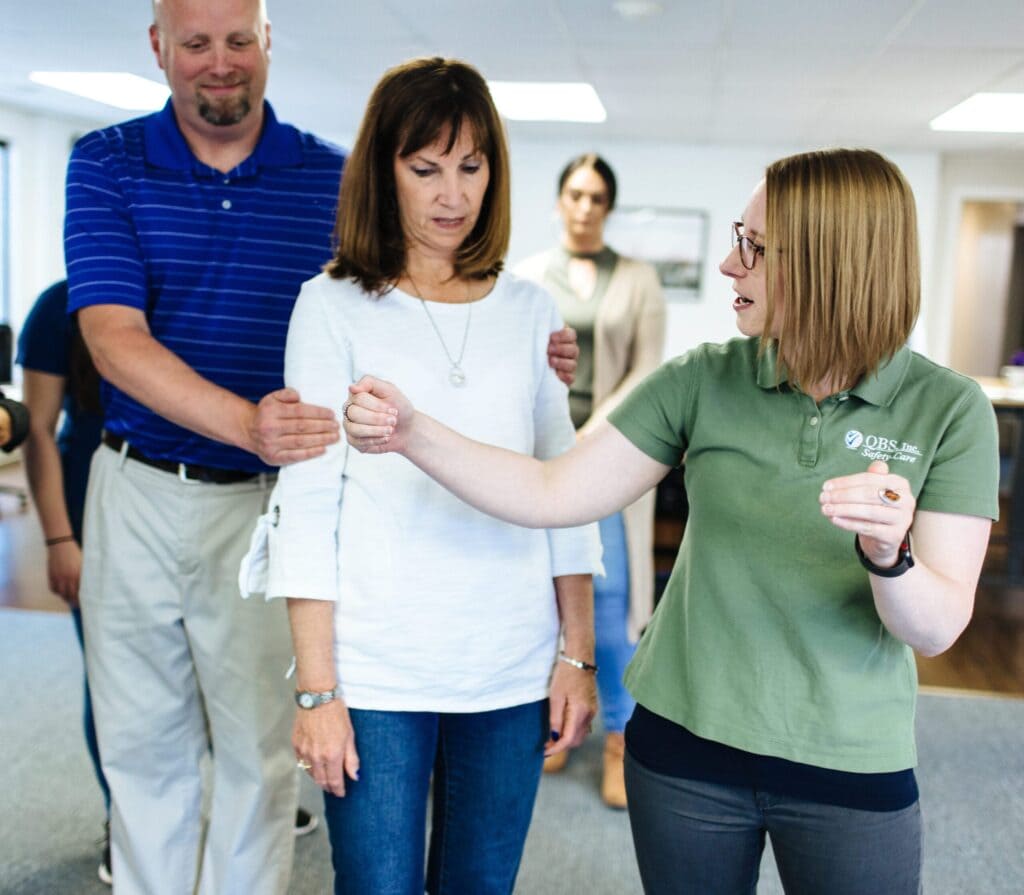
QBS Safety-Care: Redefining Crisis Prevention
Safety-Care is more than crisis management training; it provides the skills and competencies necessary to effectively prevent, minimize, and manage behavioral challenges with dignity, safety, and the possibility of change. Safety-Care delivers the tools you need to be safe when working with behaviorally challenging individuals using up-to-date and effective technologies from Applied Behavior Analysis (ABA) and Positive Behavior Interventions & Supports (PBIS). These strategies are appropriate for individuals experiencing developmental, neurologic, psychiatric, and other impairments, as well as individuals who have experienced psychological or sexual trauma. Safety-Care promotes a reinforcement-based approach to developing new skills, maintaining safety, and reducing or eliminating restrictive interventions such as restraint.
How to Implement Safety-Care?
- Register for a Safety-Care Trainer class or call us to request a closed session for your organization. We regularly conduct classes in all 50 states and Canada.
- Complete your class to become a certified Safety-Care Trainer for your organization. We bring you to fluency using an errorless teaching methodology.
- You train and certify your staff in Safety-Care’s effective techniques.
- Our Master Trainers are available by phone, email, or video to help your organization with any questions or concerns while using or implementing Safety-Care.

Quantifying Safety-Care’s Impact
70%
decrease in hours spent in seclusion
Based on real customer case studies; actual results may vary
58%
decrease in hours spent in restraint
Based on real customer case studies; actual results may vary
57%
decrease in staff-related injuries
Based on real customer case studies; actual results may vary
2,500+
Active customer organizations
8,000+
Active Safety-Care Trainers
200,000
Staff Certified Annually
Customize Your Safety-Care Program with Additional Modules
Select Dropdown
Safety-Care for Advanced Skills
For more severe behavioral challenges, we offer the Advanced Skills Module. This module provides an expanded toolbox of skills and strategies for those certified in the Safety-Care core curriculum. These include additional physical safety skills, team intervention, strategies for preventing and managing peer aggression, vehicle incidents, object management, transitions, and safe floor holds.
View Module Details View National Training Schedule
Safety-Care for School-Aged Children
While the procedures in the core Safety-Care curriculum are applicable to working with individuals of any age, this module provides supplemental training specific to a younger population. It includes training in classroom and group management, plus additional procedures for physical intervention with small children who are behaving dangerously.
View Module Details View National Training Schedule
Safety-Care for Families
Safety-Care for Families provides trainers with a customized version of the Safety-Care curriculum that can be taught to family members and others who provide in-home support. This module includes Safety-Care prevention and minimization strategies and the development of a Family Safety Plan.
What Our Customers Are Saying
Safety-Care is the Preferred Program
Features
- Training Cost
- Recertification Cost
- Additional Cost
- Initial Training
- Membership Fee
- Course Instruction
Safety-Care Trainer Training
- $2,050 for trainer training
- $700 for recertification
- No charge for training materials
- 3-Day initial training
- No membership fee
- Master Trainers are BCBAs
Other Crisis Prevention Training
- Over 2X the cost of Safety-Care Trainer Training
- Over 2X the cost of Safety-Care Recertification
- Added costs for training materials
- 4-Day initial training
- Annual membership fee
- Trainers are not BCBAs
Let’s Connect
Interested in learning more about our evidence-based, behavioral safety and crisis prevention training programs?
We’d love to learn about your organization’s unique challenges and needs. Simply fill out the form with your information, and a member of our team will be in touch.

